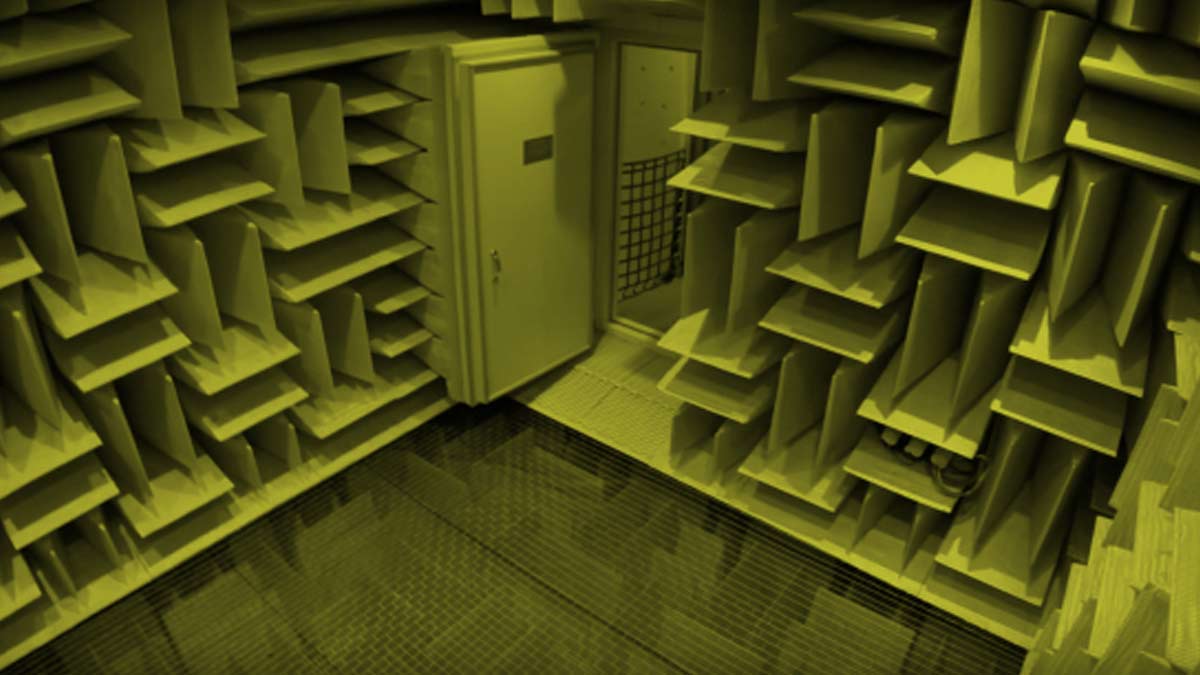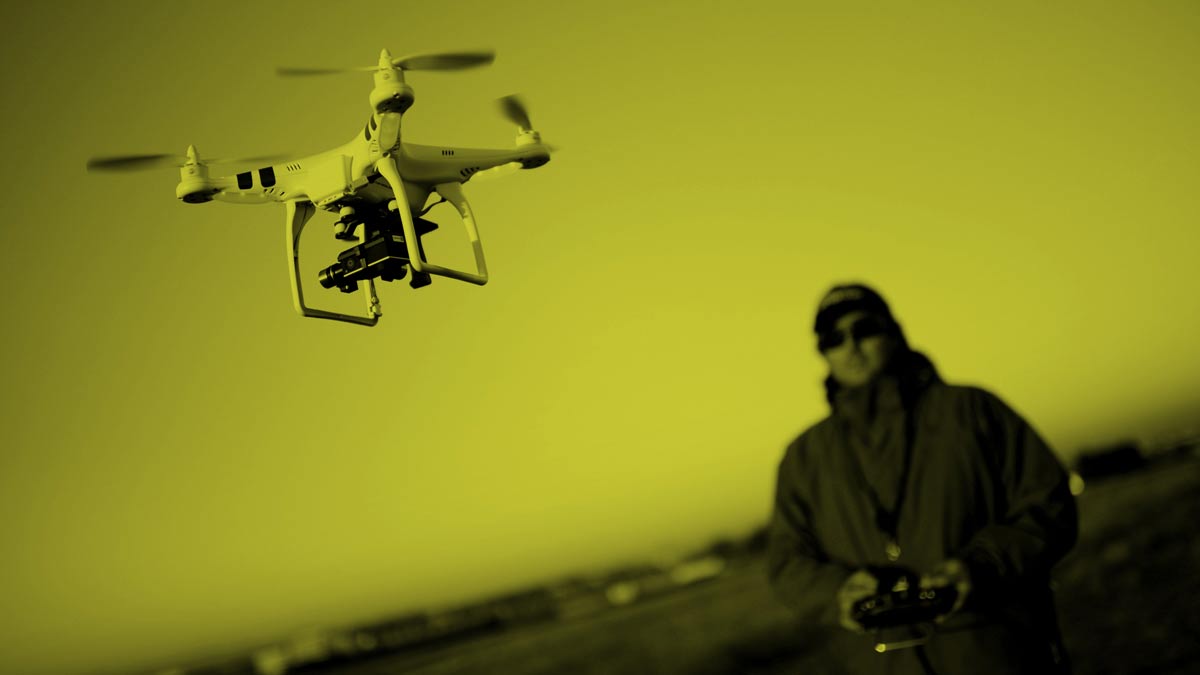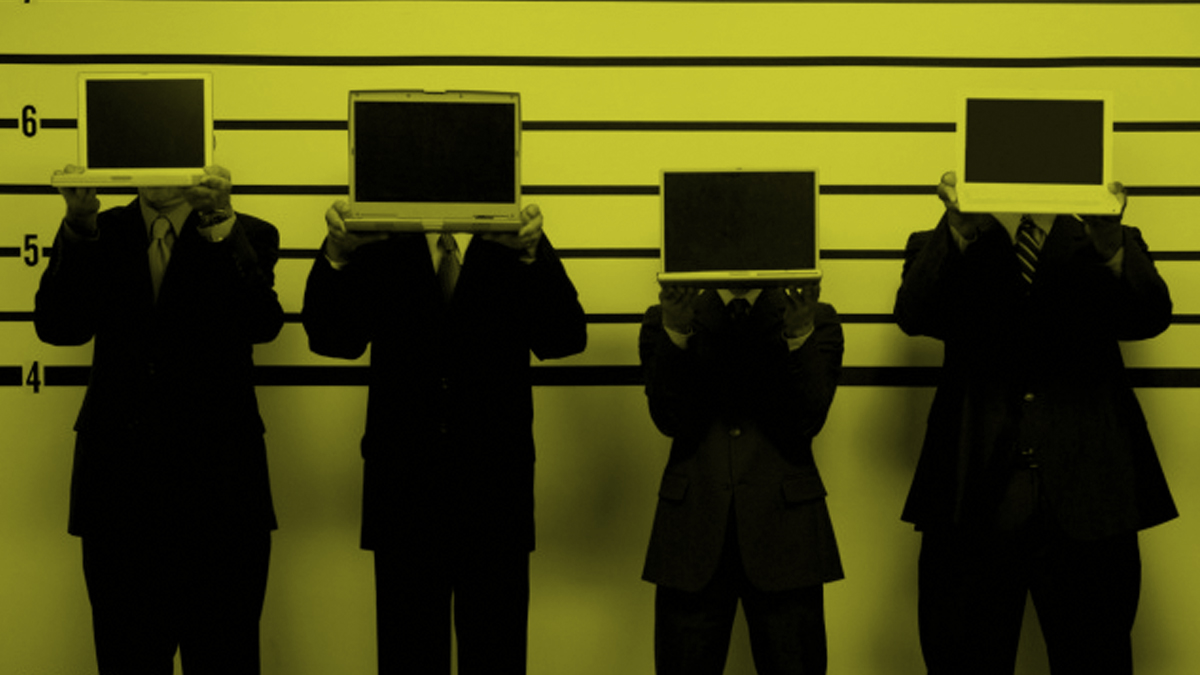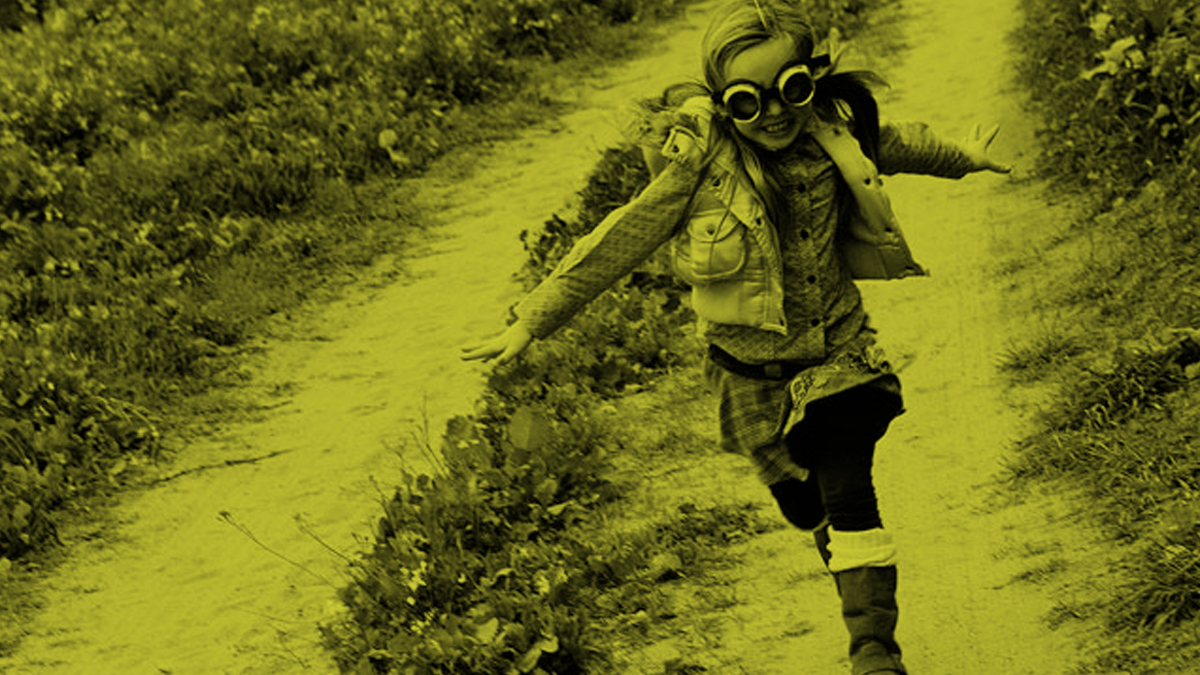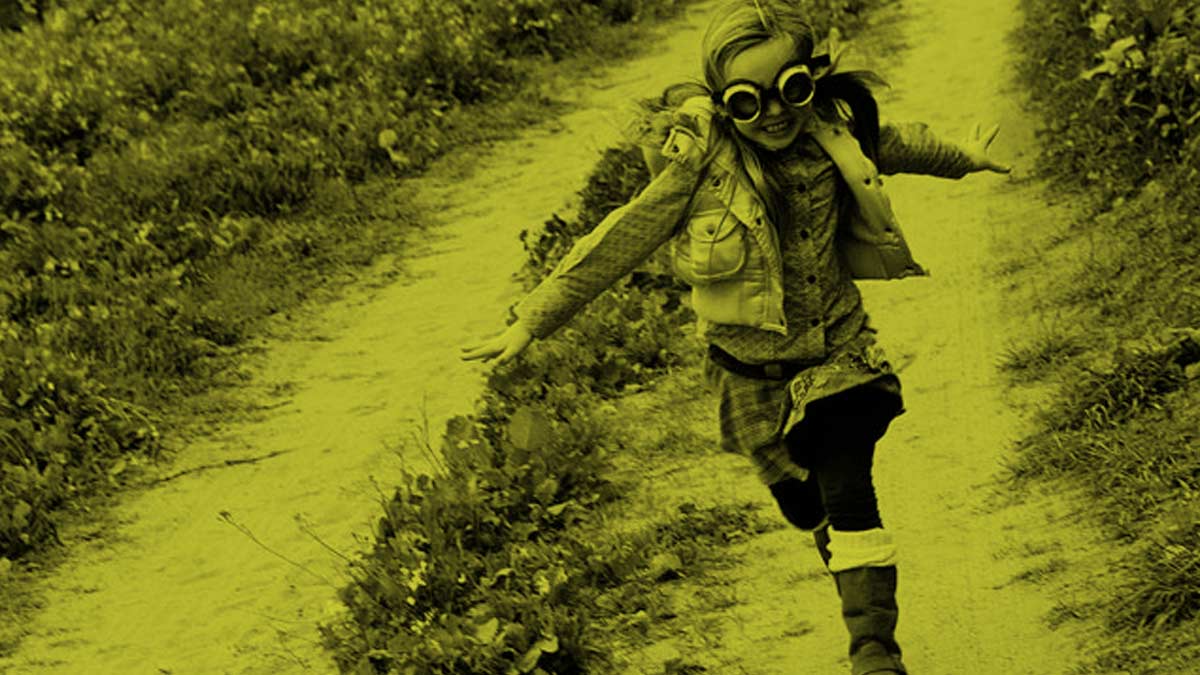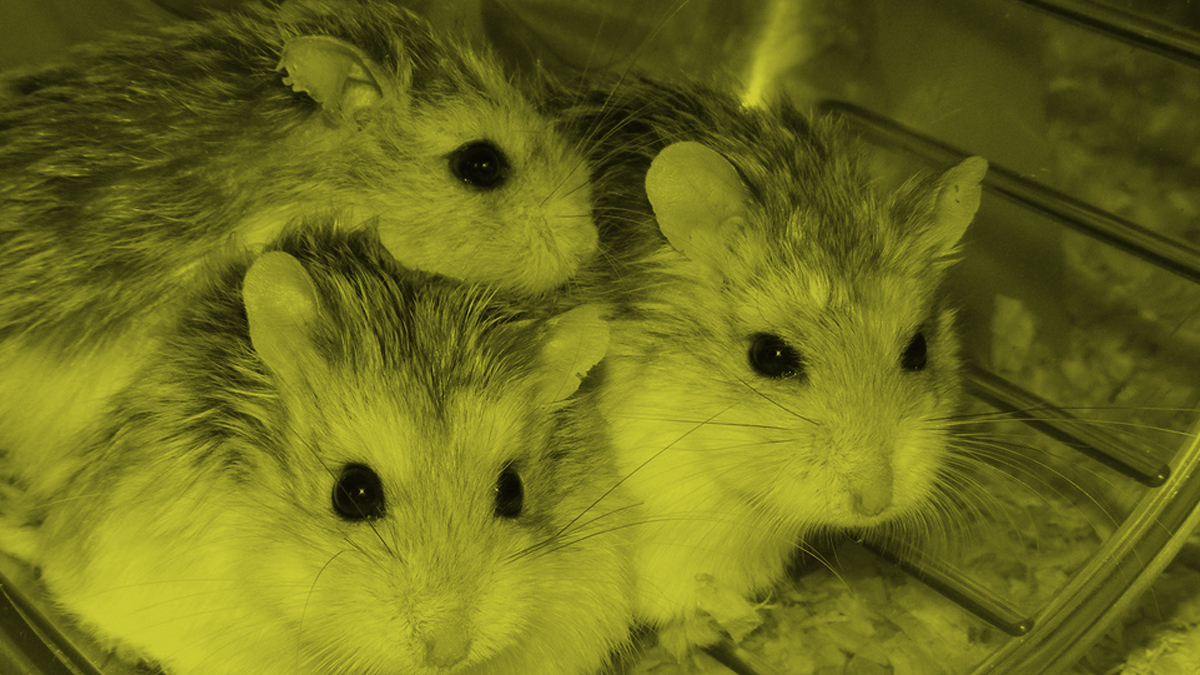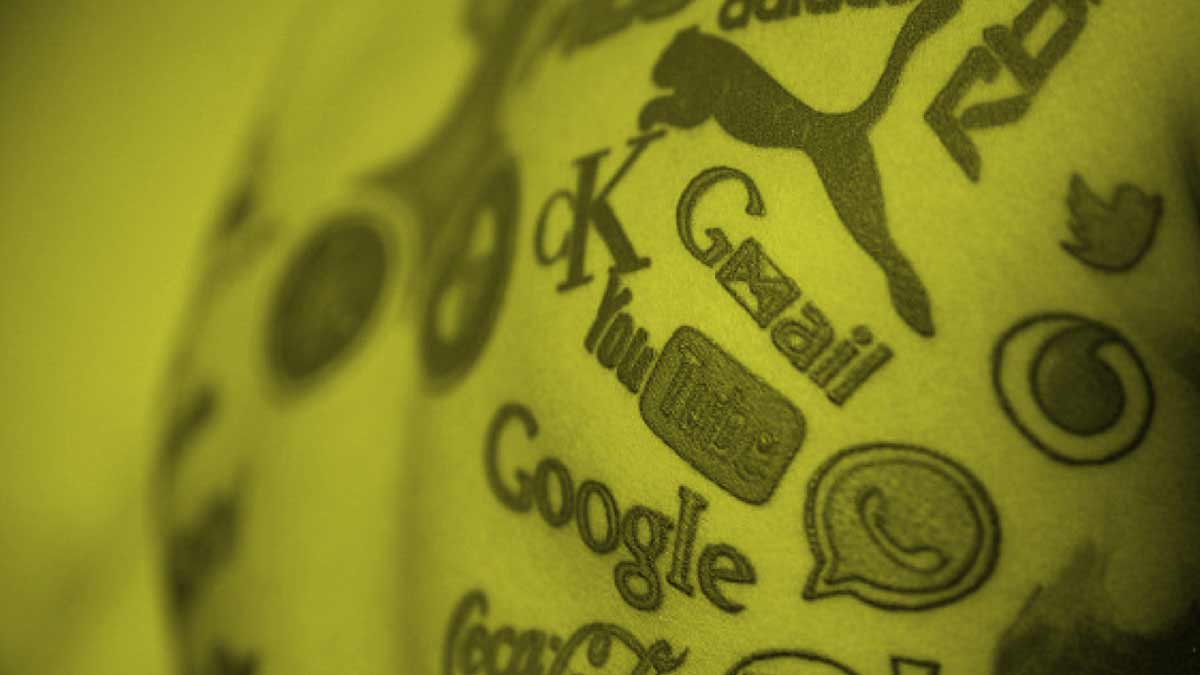Improving Design Productivity: Creatives Need Privacy
Companies see wall-less creative workspaces as an extension of their brand image. They are more interested in how it looks, than how well it works. And for creatives and designers that's a problem.
I'm a bit of an introvert. I find group activities somewhat draining. I find solitude rejuvenating and I do my best creative work when I'm alone.
Given that, it's kind of funny that I've spent my career leading large groups of designers and artists in creative settings, Fortune 500 companies, global brand consultancies and learning institutions.
I began weaving the web of my career as a fine artist. A solitary pursuit for the most part. When I needed to find a path to make a better living I got my MFA so I could teach. I loved teaching because I love learning and have a passion for helping others to achieve their creative potential.
Later, I found that being a creative director was a lot like teaching except you made a tad more money. Plus, your work and the work of your teams are enjoyed by people all over the world.
No artist wants to work in a total vacuum.
But with this transition came a need to be more outgoing. To be more often involved in group pursuits than individual ones. I built up that muscle. And it took a lot of trips to the gym.
Susan Cain, in her book "Quiet: The Power of Introverts in a World That Can't Stop Talking" writes about how in the 20th century as our society moved from agrarian communities in the country to the cities, we changed. We went from working with a small group of people who we knew well to living and working in large groups of people we didn't know. Being "outgoing" became the goal. Our heros became the great salesman of the world. Our bible, Dale Carnegie's "How to win friends and influence people".
This evolution brought with it physical changes to where and how we are working. In the corporate world and in design studios, the move to create open floor plan work spaces has reached a critical mass. In a reaction to breaking down the walls of de-personalization that the Dilbert-esque office cubicle seas wrought, we have lost something that was worth protecting. Solitude. As it turns out, designers need solitude.
They need quiet and privacy to ruminate and play with ideas. Without distraction.
The casualties of this evolution are everywhere. You can see them in any design studio in the world hiding under their noise-cancelling headphones. They aren't just getting into their own jams. They are trying to escape the constant noise and distraction that the crumbling of the cubicle walls has brought down on them.
One designer at Whirlpool articulates what I have heard over and over in my years as a creative leader:
"I work in an open-plan office, and hate talking to the people near me. I just don't want to annoy everyone else. So instead, I hole up at my desk, earphones on all day. I email people who sit five feet from me. Whoever designed my office has absolutely failed.”
“Instead of making people more collaborative, it separated them. This trend needs to stop."
The results of this trend are also quantifiable it turns out. Finland's Institute of Occupational Health reports a decline of 5-10% of the performance of cognitive tasks like reading, writing and other creative work when in an open office setting. Management might be too drunk on work-pod Kool-Aide and the cost savings in office furniture. Or the shoulder-surfing-tabs-keeping and "what the hell are these people doing?".
Open office plans just look cool. And if we look cool and modern, we are cool and modern, right? I mean, can you imagine a design firm with cubes? I didn't think so. This, it turns out, is a big part of the problem.
The facts increasingly point to this: Companies see open, collaborative spaces as an extension of their brand image. They are more interested in how it looks, than how well it actually works. Solitude is just out of fashion. Simple as that. And for creatives and designers that's a problem.
It should be a problem for their companies, too.
All this is outweighing optimal creative productivity. And since when has business turned its back on improved productivity? Especially when in today's business world, creativity and innovation are what separates the winners from the also-rans.
The fact is people whose work is distracted make 50% more mistakes and take twice as long to finish. Maybe this has something to do with the fact that we are working longer hours than ever.
Plus, most designers don't like it. You've heard "A happy wife is a happy life"? Well, it goes triple for a happy designer.
The real question is: What does work? The answer is choice. Balance. Companies and agencies need to give designers access to both kinds of work spaces. If I were to place a bet, I would bet that the spaces that afford designers quiet, uninterrupted concentration and a reasonable amount of visual privacy will be the ones being fought over. Tooth and nail, if I know my designers.
The pendulum of open floor plan offices needs to swing back to center.
In re-watching Susan Cain's amazing TED talk about the power of introversion, one statement jumped out at me. "There are no revelations without solitude."
What design revelations and innovations have we already missed by removing our creatives space to think?
photo credit: Ben Mautner @flickr.com
This How You Pack a Punch
Major social media stars with millions of followers are increasingly perceived by their audiences as less “authentic”. This defeats the whole purpose of using influencer marketing. What’s the solution?
There’s a diminutive undersea powerhouse called a mantis shrimp. It does one thing really well. It packs a wicked punch. Mantis shrimp strike out with their little arms and hit their prey in three-thousandths of a second with 1,500 Newtons of force. So fast that the water actually boils and causes a tiny bubble-shock wave that kills their prey - even if they miss.
The power of being little, fast and packing a wallop reminds me of influencer marketing. Over the last few years brands discovered the value of being promoted by social media influencers. But the major stars with millions of followers are increasingly perceived by their audiences as less “authentic”. Defeating the whole reason for engaging them in the first place.
As a result, micro-influencer marketing has emerged. Brands that have historically engaged large-follower social media personalities are increasing going directly to much smaller influencers, and more of them. This way they can pay less, diversify and regain the valuable punch of authenticity in the endorsement.
Big or small, are you making the most of your brand's scale? Do you have a marketing tool you could reconfigure? There is no excuse for not packing a wallop.
photo credit: iStock.com
You're Making Too Much Noise
The amount of noise that we have to filter today is ridiculous. The signal that we want to hear, that holds a meaningful message, is getting harder to discern.
At Orfield Labs in Minneapolis there is something called an anechoic chamber. Also known as the world’s quietest room. The sound level inside it is -9 decibels. There is literally less than zero ambient noise. When you are in it, the only signal you hear is the sound your own ears make (yes, they actually produce a little noise). That, and your own heart beating.
The amount of noise that we have to filter today is ridiculous. The signal that we want to hear, that holds a meaningful message, is getting harder to discern. Unfortunately, sometimes we are responsible for creating this noise ourselves. Trying to be on too many social platforms at once, reflecting and bouncing too much content around. You can drown yourself out.
This is why I left Twitter last year (for the most part). My analytics revealed the promotions for my agency were mainly reaching the feeds of other marketers - who were all busy reverberating their own noise. Everyone was talking, but no one was really listening.
How quiet is the room you’ve chosen to be in? Is your customer there with you? They need to be able to hear the heartbeat of your message.
The Shark and the Chumsicle
When feeding off new trends you have to strategize where you want to play. Do you want to be the first to sink your teeth in? Do you know where are you are in the food chain?
Sharks are trendy. There is a shark feeding dive I do in the Bahamas where they use a 3ft. ball of frozen fish chum (yum!) suspended from a float in 40 feet of water. They rev the boat engines like a dinner bell. In a blink of an eye there are 60 sharks milling around.
The sharks start circling the “chumsicle” in a wide rotating arc. You get to join in and swim along side them. They don’t even notice. The sharks are busy strategizing.
Soon the most ambitious peel off and attack the bait. But they have a hard time because the chumcicle is still frozen. Later, it begins to thaw and the action gives new meaning to the word “frenzy”. At the end, when the ball is dwindling, the remaining sharks fill up on what’s fallen to the sandy bottom.
When feeding off new trends you have to strategize where you want to play. Do you want to be the first to try to sink your teeth in? Do you want to join when it’s a frenzy, the food is flying and the competition is the fiercest? Or do you exercise patience and benefit from the work of others? There is no one correct answer. You just have to commit to where you want to be in the food chain.
photo credit: where2wander.com
Your Wolf Pack
What can you learn from wolves that will help you succeed in your business? I'll tell you, and it's not what you think.
There is a behavioral phenomenon in wolves called the Beau Geste Effect. When a wolf begins to howl, his pack mates will begin to howl also. However, when they join the chorus, they don’t howl in the same tone. They pitch their howl up or down an octave - modulating the tone mid-howl. It makes the pack sound larger than it is.
During the Civil War, General Ulysses S. Grant wrote that judging from the nightly cacophony, "a pack of twenty wolves" had been shadowing his unit. When the pack was eventually spotted, it turned out there weren’t twenty. There were two.
When you make yourself appear larger than you are, two things happen: 1. You stake out your territory and lay claim to its resources…and 2. You give the competition second thoughts about messing with you.
Entrepreneurs and creative professionals are leveraging social media, blogs, articles, podcasts and video to multiply their voices and appear larger than they might be in reality.
Ruling your niche is a smart move. Being small is no excuse for not owning your neck of the woods. What more can you do to keep the competition at bay?
Control vs. Creativity
Driverless cars are off to a bumpy start. The newest vehicles are racking up a crash rate double that of cars driven by humans. So what’s the problem? It comes down to control vs. creativity
Driverless cars are off to a bumpy start. The newest vehicles are racking up a crash rate double that of cars driven by humans.
So what’s the problem?
The problem is they obey the law all the time. This may not sound like a bug, but it turns out not following the rules is sometimes the best answer. Just try following the rules while merging onto a chaotic highway at rush hour. Following the rules doesn’t work out so well when no one else is following them.
Sometimes you have to think creatively to be successful.
So how much should the car break the rules? Answer: Just enough to do what’s right. Somewhere in the valley there are a lot of AI programmers losing sleep trying to figure out how to make that happen.
When it comes to leadership in business the problem is the same. When you empower people and give them control over decision-making, most often they will simply choose to do what’s right. Or should you issue commands to follow the rules no matter what? It’s Control vs. Creativity.
How can creativity drive your success?
Simply Genius
There was a mansion just across street from my studio. I always was curious how they got so rich. So, one day I decided to ask one of their gardeners.
When I was in art school there was a mansion just across street from the printmaking studio. Looking out of the window at night I would often see a man hosting opulent parties. Waiters. Tuxedos. The house had a full-time gardening staff even though the house sat on only about a quarter of an acre of land.
I was always curious how he got so rich. So one day I decided to ask one of the gardeners.
The owner of the house had the patent on the twist tie. A little piece of wire covered in plastic. Whenever anyone used a twist tie, a few cents would end up in this guy’s pocket. I couldn’t be jealous because this guy was obviously a genius.
Innovation is born of necessity. He had a lot of bags. And damn it if stuff wasn’t always falling out of them. What to do? The solution was incredibly simple.
Design is a process of subtraction. Good design becomes great design when there is nothing left to take away. When it offers the solution to the problem in the simplest possible way. Has your brand’s design become overcomplicated? Is it time to simplify?
A Smell That Will Make You Money
Scientists have proven you are 100 times more likely to remember something that you smell than something that you see, hear or touch.Now brands are increasingly putting the power of scent to work.
Last week I was cooking a recipe that called for coconut oil. When I opened the jar I was immediately transported to being 16 years old on a beach in Michigan putting on suntan lotion. I almost got smell memory whiplash.
Smells are processed by the amygdala, the part of the brain responsible for memory functions and processing emotions. Scientists have proven you are 100 times more likely to remember something that you smell than something that you see, hear or touch.
Now brands are increasingly putting the power of scent to work.
In Orlando, a company recently projected "waffle cone" smell adjacent to an ice cream parlor, driving a 50% sales increase. REI used the smell of “campfire and pine” and guess who started selling more backpacks? Don’t even get me started about what Cinnabon does. You know what they do.
Do you have a service or product that you can enhance with a scent? If you do, you might be closer to smelling success.
Schrödinger's Cookie
Marketing folks know that any time you create a line extension, one consideration is whether or not it will cannibalize your mainline product. However, the greatest worry is always: “Will it degrade the brand?”.
Pop quiz. When I say these flavors, what do you think of? Biscuits and Gravy, Greek Gyro, BLT, Cappucino and NY Reuben. Well, I’ll tell you what I don’t think of. Lay’s Potato Chips. But that’s what they are. The result of Lay’s “Do Us Flavor” campaign of limited-edition chips.
OK, let’s try again. Jelly Donut, Mississippi Mud Pie, Raspberry Danish, English Breakfast Tea and, wait for it…Swedish Fish. Give up? Oreos.
Marketing folks know that any time you create a line extension, one consideration is whether or not it will cannibalize your mainline product. However, the greatest worry is always: “Will it degrade the brand?”.
New flavors can breathe life and excitement into somewhat boring consumer staples. Happily, they give their social media teams something to tweet about. But they beg the existential question: When does an Oreo become not an Oreo? When does it become a parody of itself?
Experimentation and innovation energize and revitalize brands. But care should be taken that we don’t try too hard to fix something that isn’t broken. I mean, yesterday I walked by Pumpkin Spice Twinkies in the store. Is nothing sacred?
A Close Shave
Blind loyalty to a brand can come back to bite you. I’ve known I’ve been getting ripped off for a while. But I just never did anything about it. Now I feel violated.
The viral video from Dollar Shave Club came out 5 years ago, so I’ve known I’ve been getting ripped off for a while. I just never did anything about it.
Gillette had me hypnotized into thinking that ever-increasing blade counts and handles with more foils than a Lamborghini translated to a shave only their product could achieve. Call me a slow learner, but I didn’t realize the extent of my stupor until Saturday.
That's when I walked into CVS to get cartridges for my aging Trac II razor. $32.99 for ten cartridges. No handle mind you, just bits of plastic with two blades at $3.29 each. I felt violated. My brand loyalty and my perception of quality got nicked by reality and I needed a styptic pencil.
A few days later, my new steel safety razor and 100 single-edge blades (at 5 cents each) arrived from Amazon. Wouldn’t you know it, with a little practice the shave I got from a 5 cent razor was just as close - and as a bonus, the luxurious feeling of the weighty steel handle was intensely satisfying.
Don’t get me wrong, I value quality, design, performance and technology. When you deliver them to me consistently I am the most devoted of brand evangelists. But when a brand begins to take advantage of that devotion, delivering the same results at a 6400% premium and are banking that I won’t notice (and I didn’t), let’s say I felt double razor burned.
How are you honestly earning your customers and clients devotion?
I'm Watching You
In business and design we often develop a products by thinking about our customer target and then creating something we think they will want. But often we land far off the mark and wonder what went wrong.
Over a period of 6 years, the photographer John Thackwray photographed the bedrooms of 1200 millennials from around the world. The range of physical environments, materials, colors and collections is absolutely fascinating.
In business and design we often develop a products by thinking about our customer target and then creating something we think they will want. But often we land far off the mark and wonder what went wrong.
What went wrong lies in the difference between thinking and observing.
Successful marketing relies on an intimate knowledge of your customer. You can’t learn what you want to know by asking them, because what they say they want and what they end up buying is often very different. Just ask someone who runs focus groups.
You have to observe them.
After looking at the bedroom photograph of just one of these millennials, I guarantee you could design a product experience that would delight them.
I am sure you have thought long and hard about your customer but have you really observed them?
The Secret
In a world of failing small town main street businesses, this little soft-serve stand is rock solid. Why?
Soft-serve ice cream is simple. Chocolate, vanilla, chocolate-dipped, sprinkles. Like I said, simple. No secrets.
Last weekend my wife and I were biking on a rail trail in the Delaware River Valley. It was hot, so we stopped at a little Mom and Pop soft-serve stand. I mean, why work off the calories if you can’t put a few back on?
They had 21 flavors of soft-serve. Twenty. One. Every flavor you usually find at a regular scoop ice cream parlor, rum raisin, pistachio, rocky road, they had it, but in soft-serve. I’d never heard of such a thing.
So I got butter pecan and it was…amazing. What kind of soft-serve innovation voodoo magic have these people stumbled upon? Why does the entire world not know about this?
I’ll tell you why. They don’t tell anyone. Oh sure, everyone for 25 miles around knows about them. In a world of failing small town main street businesses, this little soft-serve stand is rock solid. Why? Because they have a complete lock on the market. No competition. Anywhere.
A wildly successfully business isn’t always about scale or marketing. It’s about having a secret. Inside every business there is at least one secret that is magic.
Let’s uncover yours.
This Is Why You Need A Drone
Companies trying to create brand strategies internally are hampered by the same thing: a lack of perspective. They’re just too close. Strategic accuracy requires an aerial view
During our town’s 4th of July fireworks I noticed something new. Little red lights up in the sky over the crowd. Aliens watching the festivities? Nope. Drones. Filming the fireworks from just outside the explosions.
High in the upper canopy of the Amazon, hovering above an active volcano, helping search and rescue teams, drones are giving us a new perspective. Perspectives we couldn’t get without their help.
Companies trying to create brand strategies internally are hampered by the same thing: a lack of perspective. They’re just too close. Strategic accuracy requires an aerial view to understand not only what the brand is about, but its competitive landscape and its customers.
Company insiders can create blindspots. CEO’s and CMO’s have strong ideas about what their company is or is not. Only an outsider has the independence to evaluate, recommend re-thinking, or even setting aside these preconceptions.
Branding agencies are like drones. They can give you that birds-eye perspective you simply cannot have no matter how high up you are in a company. Would your company benefit from seeing the fireworks from a different perspective?
photo: NANO CALVO/CORBIS
The Prince Needs A Logo
He sent me a detailed project brief. I sent him a proposal. He accepted it no questions asked. I thought this was a little odd, but I told myself everyone deserves an easy client once in a while. Don’t they?
Last month I got an email from a guy starting a furniture importing business. He needed a logo and pamphlet for his first trade show. Our phone connection was terrible, but he agreed without hesitation to my estimate of what it would cost.
He sent me a detailed project brief. I sent him a proposal. He accepted it no questions asked. I thought this was a little odd, but I told myself everyone deserves an easy client once in a while. Don’t they?
He wanted to pay the 50% deposit immediately by credit card. He was in a hurry. Too big of a hurry. I sent him the invoice. Then I got the email. It said: “I am going to pay you immediately, but I need a favor.”
That’s when I knew I was getting scammed. They want to pay you extra, then ask you to send the extra funds to another contractor for them. Then they dispute the credit card charge, and you’re out the money you relayed.
So I emailed a reply asking if by chance he was also a Nigerian prince. He never wrote back.
I keep telling myself I should have see it earlier. No clients are that easy. No clients ask no questions. But I mean, who scams design agencies? Who sets up a grift by asking for a logo and a pamphlet? A prince does apparently.
photo source: www.thetechbreak.com
All The Feels
Branding 101: When you speak to someone’s emotional center rather than their logical mind you solicit a response that is stronger, deeper, longer-lasting and primal.
Recently, I worked with a client who specializes in shipping stuff to and from Latin America. Experts in Third Party Logistics. Their competition’s websites are full of online calculators for weights, fees, dates, lists of countries. Lots of data. My client’s website is not. Their website talks about things like how it feels when your boss congratulates you for hitting that impossible shipping deadline.
In the book “Brand Immortality: How Brands Can Live Long and Prosper”, the authors analyzed 1400 case studies of advertising campaigns. They found that campaigns with purely emotional content almost doubled the performance of ads with only rational content. 31% vs. 16%. We act on what we feel. Not what we think.
When you speak to someone’s emotional center rather than their logical mind you solicit a response that is stronger, deeper, longer-lasting and primal.
That’s why I always counsel my clients on how critical it is to know their customers motivation. Not only what functional problem they want solved, but how they want to feel when that happens.
Because the feeling is what they are seeking. Security, joy, safety, recognition. If you can describe and deliver the feeling, the mind will follow.
photo credit: Alk3r@flickr.com
Video Is The New Black
It's estimated that 80% of all content consumed on the web will be video by 2020. To the entrepreneur, brand owner or creative professional, “video is the new black”. The once nice-to-have is now a requirement to remain competitive.
When I was 11, I filmed an epic disaster movie in my basement on a Super 8mm camera. It was called “Ball!”, and told the story of a Godzilla-sized Nerf basketball that destroyed an entire town, which consisted of my slot car race track, HO gauge train set and a lot of plastic army men. I used a lot of lighter fluid. Let’s just say it’s a good thing there weren’t smoke detectors in those days.
At the time, my friends and I were drawing lots of robots and war scenes on paper and sharing them with each other. Needless to say the screening of “Ball!” for my buds put me in a class of my own in the storytelling department. Because my story was moving.
It's estimated that 80% of all content consumed on the web will be video by 2020. Gulp. Facebook, YouTube, Snapchat, Netflix, Hulu, Amazon, Instagram and their mother are now starting to stream original programming. Not happy with being merely platforms, they are jumping into being content creators.
Video is the new black. The nice-to-have is now a requirement to remain competitive. For the entrepreneur, brand owner or creative professional the important question is: Are you moving yet?
photo credit: Philip VanDusen
A Hamster Wheel In The Forest
If you take a proven concept and place it in a new context, you may find out things about your audience that you didn’t know. What actually motivates them. What they are really thinking. Why they are responding the way they do.
Scientists recently did an experiment. What would happen if you put a hamster wheel out in the forest? No food. No red button to press to get a treat. Just the wheel, an open door and a motion activated cam.
Mice, rats, shrews, voles, lots of little guys who were obviously not getting enough exercise showed up. They ran. They came back again and again. It turns out hamster wheels aren’t just for the incarcerated. When the scientists took it away, they all kept showing up wondering why the gym had closed.
If you take a proven concept and place it in a new context, you may find out things about your audience that you didn’t know. What actually motivates them. What they are really thinking. Why they are responding the way they do.
Contextual awareness is the next major hurdle in marketing. The goal is being aware of your customers changes in location, behavior, interests and needs at any given moment, as those moments change. Do you truly understand what makes your customers tick?
photo credit: Philip Roberts @flickr.com
Just Keep Swimming
The athletic marketplace is looking a lot like a reef these days. With the imminent demise of traditional sporting goods retailer Sports Authority, there is blood in the water.
I was scuba diving in St. Croix a couple of weeks ago. Lionfish are an invasive species in the Caribbean and they are eating all the other fish - absolutely decimating reef populations. They’re evil. So whenever you go diving these days you take a speargun. Because while you’re out having diving fun, you are also always hunting lionfish.
When you spear a lionfish, sharks, who can smell a single drop of blood in an olympic-sized pool pick up the electric impulses and soon show up hoping for a free meal. So you have to keep your eyes open. Because when sharks arrive after hearing a dinner bell, they are let’s just say, frisky.
The athletic marketplace is looking a lot like a reef these days. With the imminent demise of traditional sporting goods retailer Sports Authority, there is blood in the water. Athleisure brands like Under Armour, REI, Athleta and Sweaty Betty are circling, taking advantage of the opportunity and snapping up new customers as lifestyles and tastes change.
It’s survival of the fittest. Design and strategic branding are powerful assets for customer acquisition, but so is just paying attention when someone else is getting speared.
photo credit: lionfish: keywestaquarium.com
Under Your Skin
Branding is a lot like tattooing. It’s far better to think it through and make the investment than to cobble it together bit by bit.
My wife Beth has some tattoos, a few different styles, added at different times, and scattered about. One cluster she wasn't happy with anymore. She decided to join them together into a single design that was unified and had continuity.
In the tattoo world, they call this a “cover-up”. But obviously you can’t just start over with a clean slate. You have to incorporate the old designs into the new one in order to hide them.
It’s complicated, expensive and it takes far longer to do than the original. Meaning even more time under the needle. Ouch.
I’ve been working with a entrepreneur who realized the brand presence they have is a bit of a mess. They had developed it piecemeal, designing new elements as they were needed. But as it became larger, the brand became scattered.
As we worked to clarify his brand strategy and create an cohesive design system, it struck me that branding is a lot like tattooing. It’s far better to think it through and make the investment than to cobble it together bit by bit.
Because doing a brand cover-up hurts.
A Better Mousetrap
Peanut butter is the ticket with mice. The trick is to put the trap out without setting it and let them get used to eating from it. Then one day you set it. Brands do the same thing with us.
My next door neighbor has mice. It was a cold winter here in the Northeast and I guess their basement was a little more cozy than the woodpile outside. Their cat, historically a great mouser, has been slacking. It's not healthy to have mice around when you have kids, so they had to set some traps.
Peanut butter is the ticket with mice. The trick is to put the trap out without setting it and let them get used to eating from it. Then one day you set it.
Brands do the same thing with us. Nestle is doing it with their chocolate. We like Nestle's chocolate. We've gotten used to eating it.
So when Nestle announced that they’re going to cut the sugar in their chocolate, they set the trap.
We all know eating less sugar is a good idea. We’ve been packing away a little too much of it for the last few decades. So Nestle is betting that if we know there is less sugar in their chocolate, we will feel better about buying and eating more of it.
Some of us may be smarter, or have more willpower than that. But this mouse likes the cozy warmth of the idea of more chocolate. More chocolate is always better. Snap.






